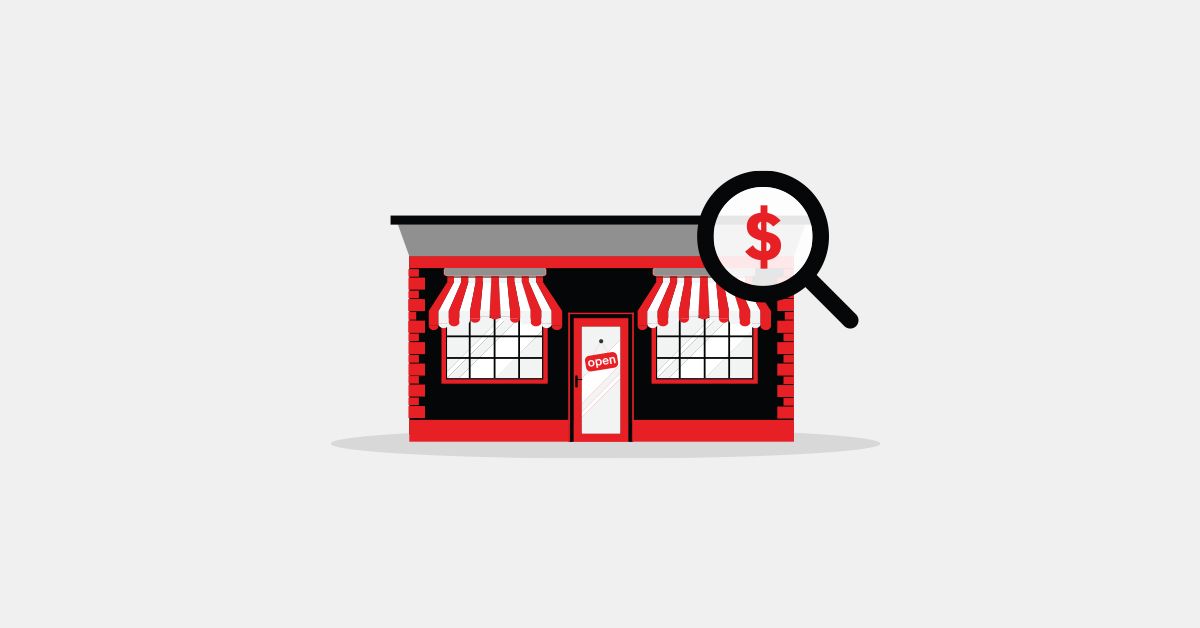
Foodservice supply chains are a complex system of interconnected gears in the shape of farmers, stores, restaurants and end consumers, all interdependent on each other to keep running. What happens when one of them fails? Or multiple steps fail? While supply chains have faced disruption in the past, the last two years have proven challenging for all industries.
According to the National Restaurant Association’s senior vice president of research, Hudson Riehle, 96% of operators experienced disruptions in key food and beverage supply chains. Not only that, but 80% also experienced disruptions in their equipment and other service times.
While there’s no foolproof way to completely avoid all of the aftereffects of current supply chain disruptions, there are several steps you can take to help further secure your business and food service supply chains.
- Use analytics to forecast demand
- Switch to adaptable menu offerings
- Opt for vague menu descriptions
- Analyze food costs with menu management
- Control and automate your inventory
- Step up your waste management
- Shorten foodservice supply chains with local suppliers
- Have a vendor plan A, B and C
Find out how to help your restaurant thrive.
The future-proof restaurant tactics that add flexibility to your business—a key to thriving in the changing world of hospitality.
Find out how to help your restaurant thrive.
The future-proof restaurant tactics that add flexibility to your business—a key to thriving in the changing world of hospitality.
Use analytics to forecast demand
While you can’t predict the future to an exact degree, you can still make smarter decisions about what you’ll be serving using past data. If on certain months, days or even times of the day you tend to sell more of a particular product, or you have more or less people coming in, you can plan ahead and put an emphasis on getting specific ingredients that you know you’ll need.
This is where a restaurant point of sale system with analytic capabilities can come in handy, as it can compile data on diner habits and present it through insights in a more digestible format.
Be flexible with your menu offerings
Being flexible is key when trying to deal with ever-changing foodservice supply chains. Approximately 75% of restaurants have changed their menus due to supply chain issues.Certain ingredients might not be available on any given day, and that means you’ll have to figure out how your menu will look as a result. Having a flexible menu will help you keep serving without removing items from your menu completely. Think about different ways your items can be prepared, and alternative ingredients that can be used to make your regular dishes in case your usual ingredients aren’t readily available. If you’re missing an ingredient like pumpkin seeds for your summer salad for example, you’ll be able to change to sunflower seeds, without having to alter your menu description.
Another tip is to use editable menus. If you’re using QR codes or digital menus, it’ll be easier to change your menu before any given service. If your restaurant doesn’t have digital menus, simple things like having chalkboard menus, or editable wall menus are a more traditional (and cost effective) way of keeping your menu up to date.
Use vague menu descriptions
It can be disappointing for customers to arrive and realize certain items displayed on the menu aren’t available. While many restaurants opt to be as detailed as possible to generate interest in a particular dish, it might come in handy to use vague wording when you can’t rely on specific ingredients. Opt for broader words like “vegetables”, “fruits”, “protein”. Of course you still have to write enticing descriptions, but avoid making very detailed descriptions that will bind you to a specific ingredient since you might end up using alternatives. Having options like a soup or dish of the day can also give you room to offer whatever’s available on a given day.
Analyze food costs with menu management
Up next is menu management. Foodservice supply chain issues might mean finding other vendors, or additional expenses to get key supplies in on time. Since it’s no longer business as usual, you shouldn’t be treating your menu as you did in 2017. 91% of operators have experienced an increase in their food costs in the last two years. In order to lower your food costs and make smarter ordering decisions with restaurant food suppliers, you need to understand what’s selling, what’s not and what’s making a profit.
This is where technology comes in. With advanced insights from your point of sale you’ll be able to get a detailed breakdown of your menu’s performance, find out your best sellers, underperformers and hidden gems. With this information you’ll be able to 86 dishes that aren’t worth your while, and alleviate the dependency on supply chains for those particular ingredients. You’ll also be able to focus on making sure you’re getting key ingredients to make dishes that are selling out and are making a profit.
Control and automate your inventory management
Taking control of your inventory and food logistics has never been more important than during supply chain issues. Keeping track of your stock will help you lower food costs and will give you a better idea of how much you have on hand and how much you should order at any given time. It can also help you plan for potential disruptions.
While a lot of this can be managed manually, this leaves a lot of room for human error, discrepancies and can take a lot of time to accomplish. Automating your inventory process with an inventory management system, takes spreadsheets out of the equation and helps you track what you’ve purchased, produced, wasted or sold. This will also help you with waste management and cost control, by giving you the insights you need to order only what you need. Running a tight ship with your inventory is one of the most important things you can do during supply chain disruptions. You can plan ahead for disruptions and ensure you have what you need when you need it.
Step up your waste management
Waste is a huge issue in the restaurant industry. Restaurants in the US, for example, generate 22 to 33 billion pounds of waste each year. Waste management will also be essential in how often you’ll need to resupply your pantry. By maximizing each ingredient, you’ll be able to reduce your waste, lower costs and reduce how often you need to reorder. By finding new uses for each part of your ingredients, you’ll be able to make more dishes and create interesting additions to your existing dishes. Get creative with your trimmings and other parts of an ingredient you don’t regularly use.
Also take a look at how customers are interacting with a particular dish. Approximately 55% of leftovers are left behind on the table. If customers are ordering a best seller, but you notice the plate comes back half empty, or they might not be touching the side salad included, it might be time to take a look at portion sizes and what you’re including in your dish. This is an opportunity to reduce sizes and use fewer ingredients.
Shorten foodservice supply chain with local vendors
Sometimes the best way to reduce supply chain disruptions and tackle food logistics is to look next door. Shortening your foodservice supply chains means working with local vendors or going directly to farms near you for ingredients. With shipping fees and delays on the rise globally, finding local vendors for some or most of your ingredients can lower costs and also help the environment by reducing the environmental pressures that come with long-distance shipping.
Since 2020, the “buy local movement” has gained popularity, with many customers ready to support local businesses. Opting for different ingredients produced in your region can add a local flavor to your food and it’s something you can easily promote in your restaurant’s menu and marketing materials.
Have a vendor plan A, B and C
Whether you use vendors for specific types of food or even things like delivery containers, it’s important to have an airtight strategy around how you get your restaurant supplies. If one falls through, you need to have a plan in place and a new vendor to reach out to. While it’s definitely more complex than working with just one vendor, supply chain challenges are on the rise and this means you’ll need multiple vendor options to look to when you experience delays or cancellations. Whether you choose to work with one supplier or multiple off the bat, it’s important to at least have connections and contacts for additional vendors if your main vendor falls through.
Benefits of having a multi-supplier strategy
Having multiple vendors can come in handy in many situations. If a particular vendor decides to increase prices, having different vendors can help you negotiate lower prices, or gives you more flexibility to order from one instead of another. You’ll be less reliant on one vendor and less susceptible to price increases.
Depending on one vendor for all of your food needs is a risky move, even before the supply chain crisis. If your existing vendor is experiencing shortages or delays, you can look to a different vendor and still make your order in time.
Cons of having a multi-supplier strategy
Of course, there are also negatives to juggling multiple restaurant food suppliers at the same time. One of the less desirable outcomes is you might not get the same quality of ingredients every time. If you trust a particular supplier and you know the quality of the food, you’ll be able to expect the same quality ingredients on a regular basis. While having multiple suppliers can make you less susceptible to price increases, it’s also true that working with one supplier for most needs means you can negotiate discounts and specific deals.
Take control over your foodservice supply chains
Whether you have one or multiple suppliers, disruptions are a fact of life for restauranteurs around the world. Your first line of defense is to put strategies in place that help you handle whatever comes your way and keep you serving. This means using data to your advantage and making smarter decisions that will help you plan for today and for the uncertainties of tomorrow.
Ready to take on shifting supply chains and take ownership of your inventory management? Talk to one of our experts to find out how Lightspeed can help.

News you care about. Tips you can use.
Everything your business needs to grow, delivered straight to your inbox.


